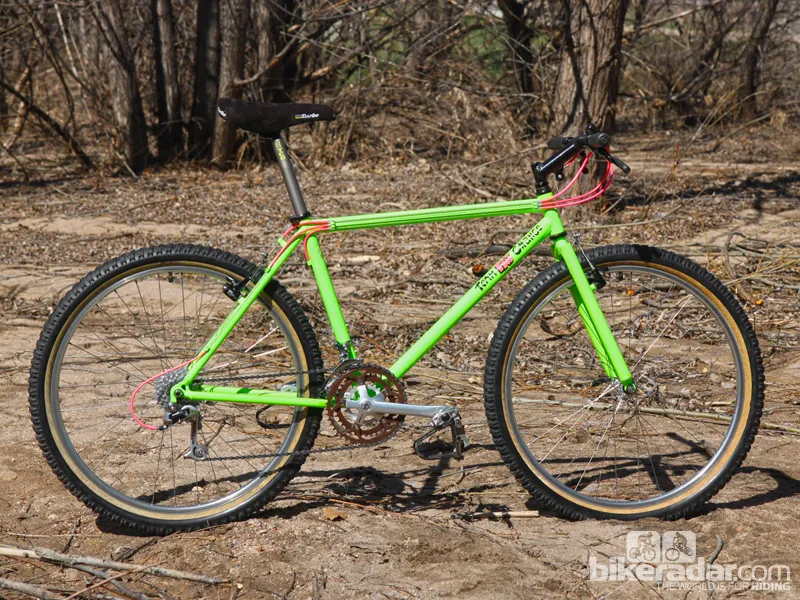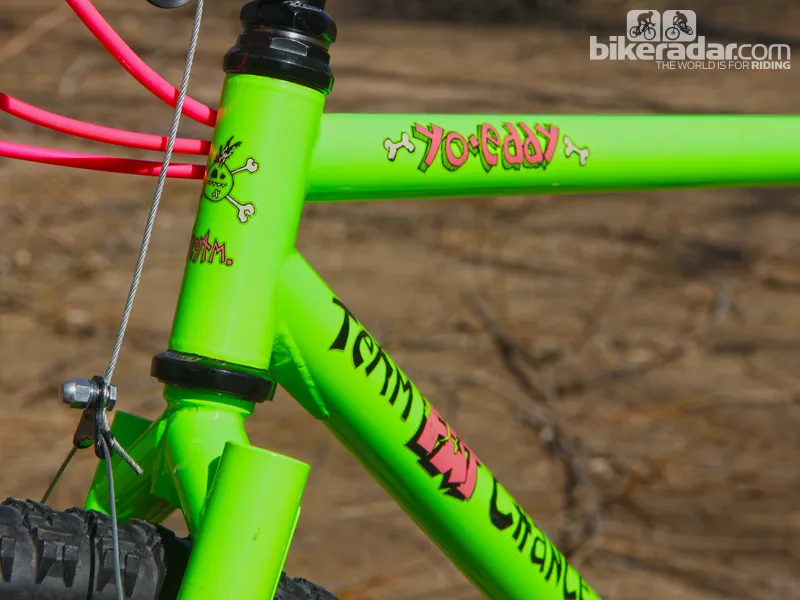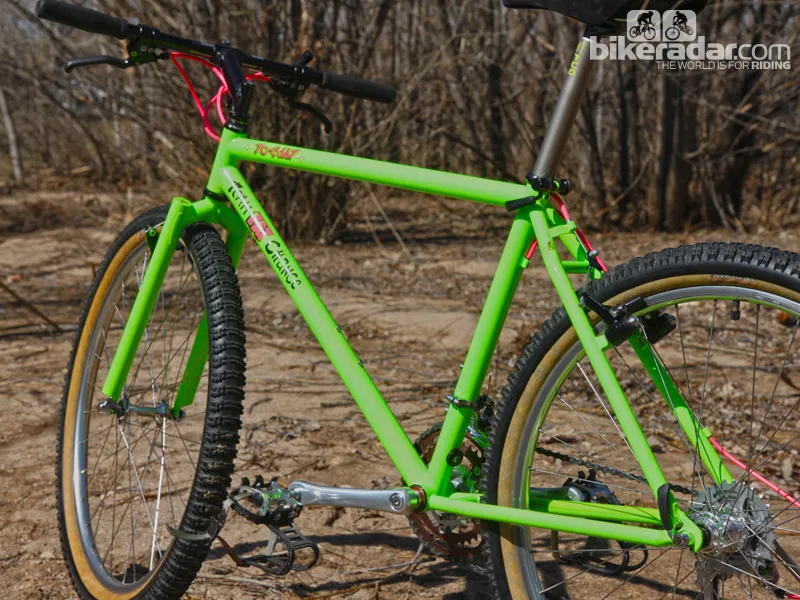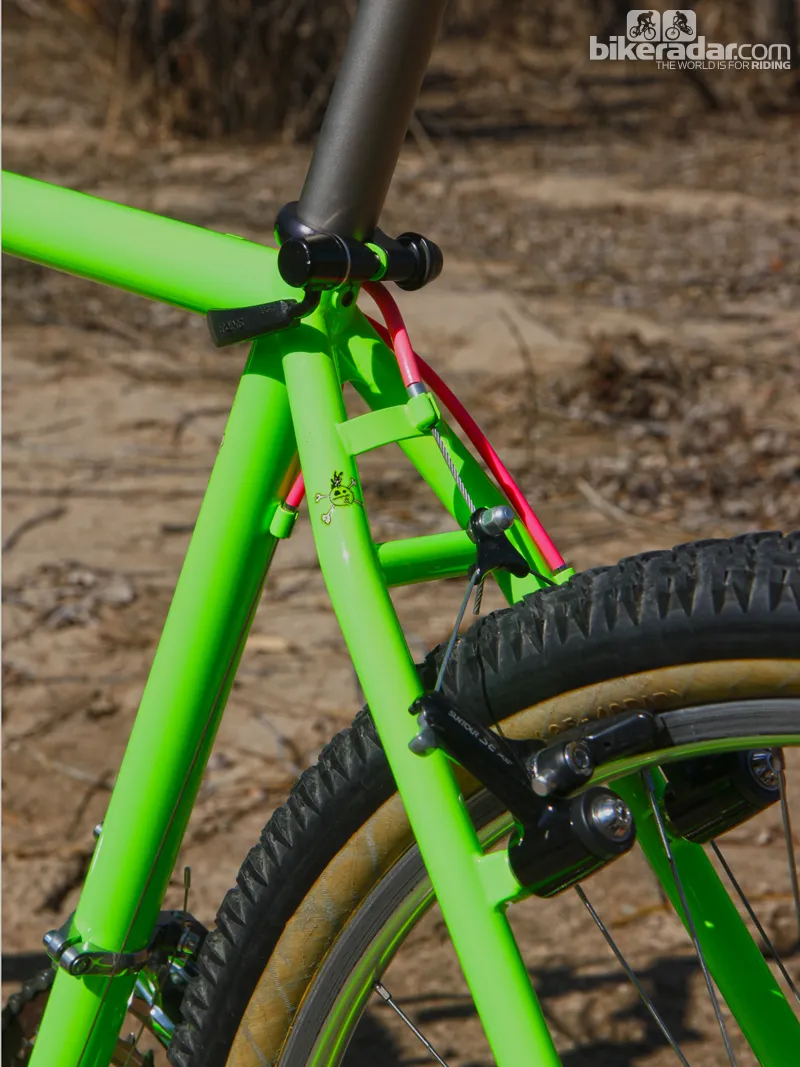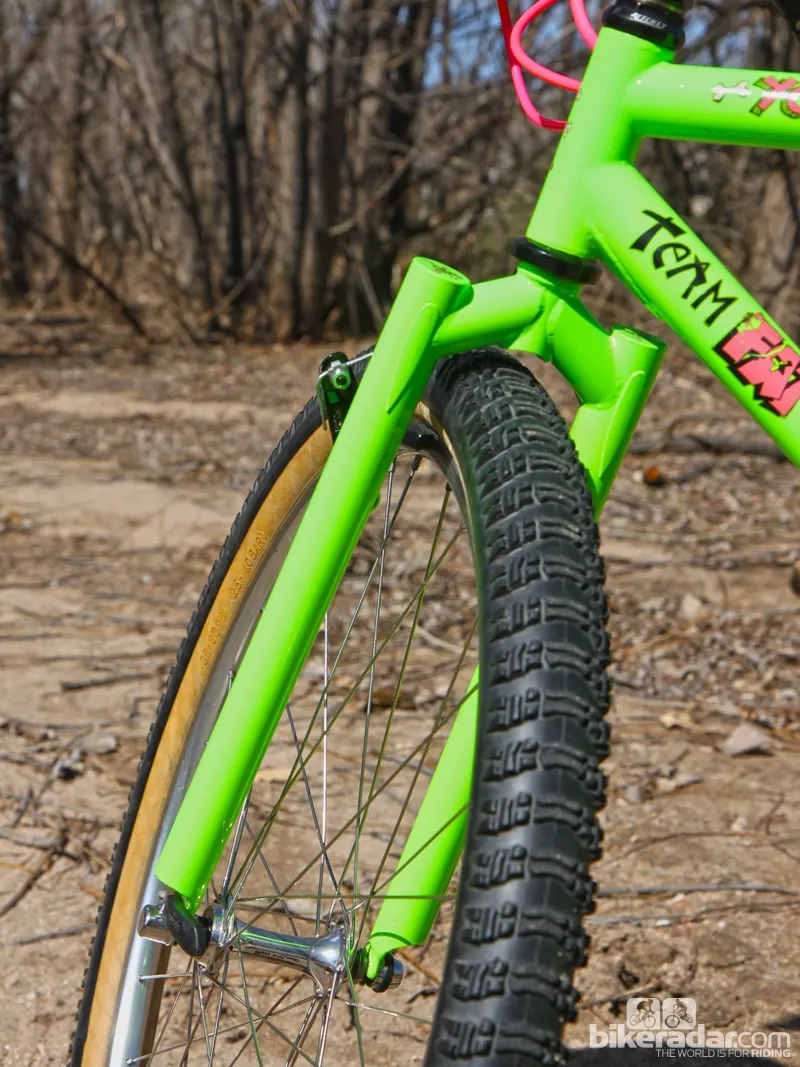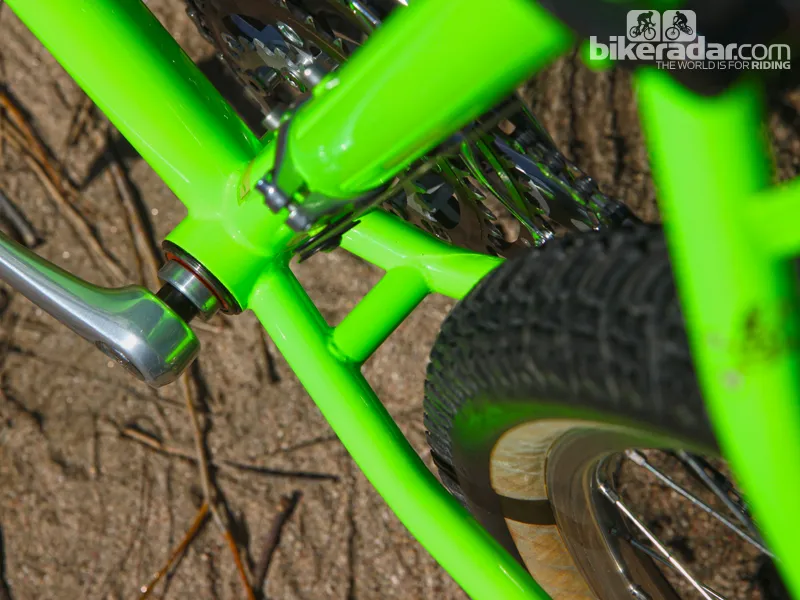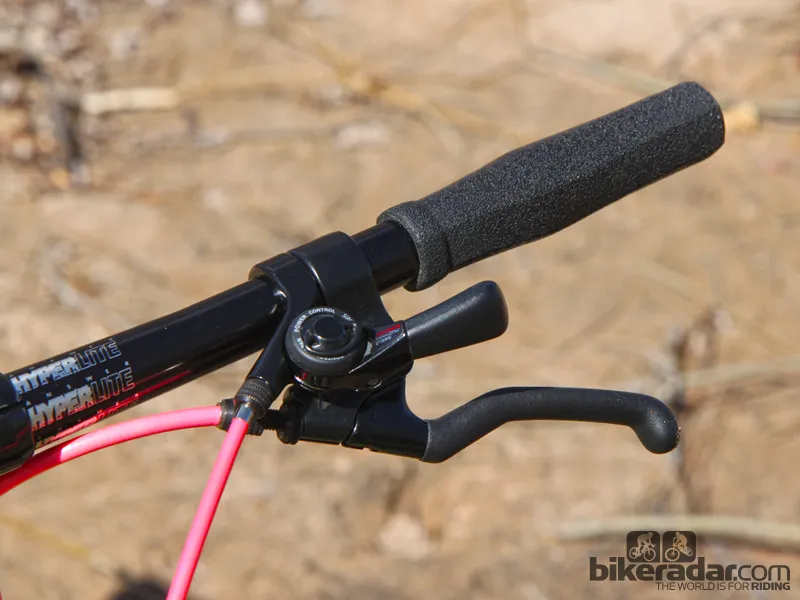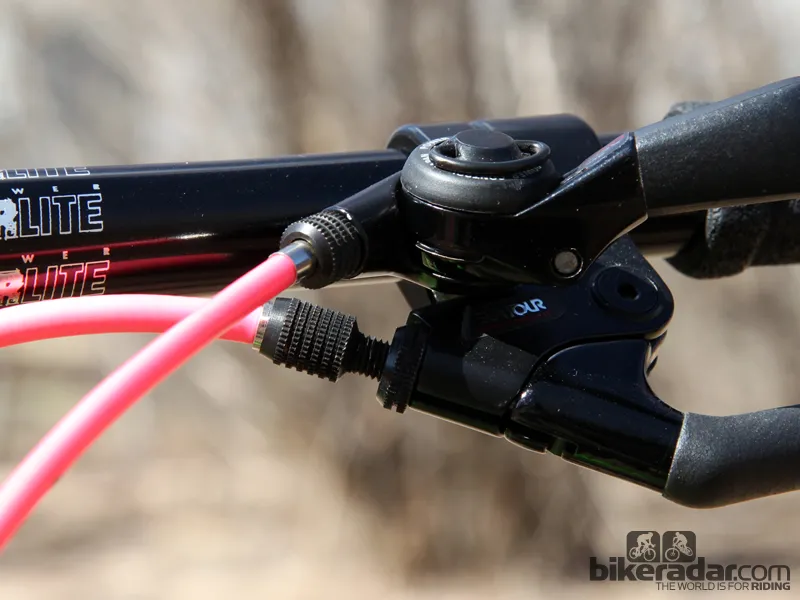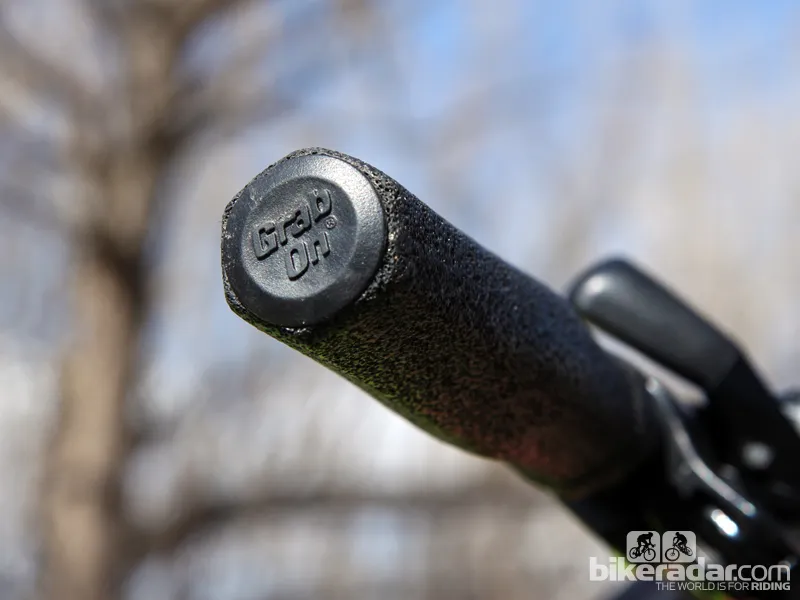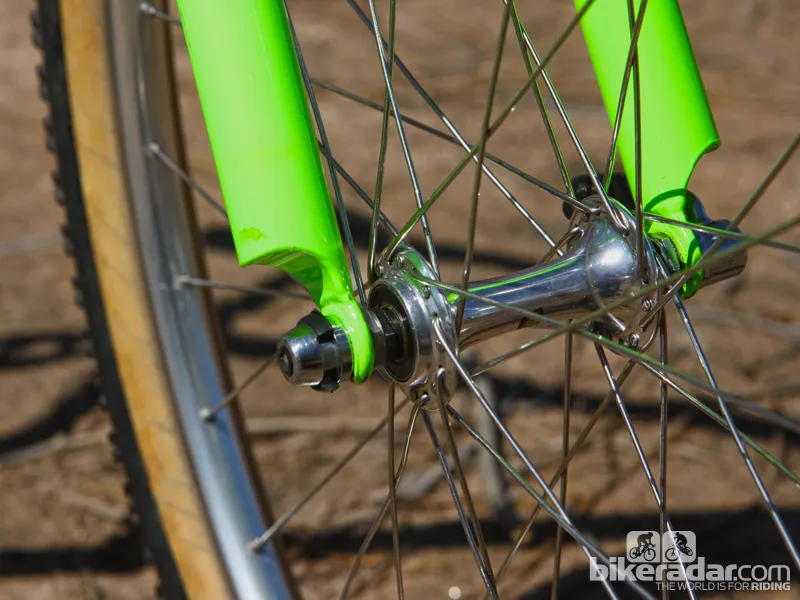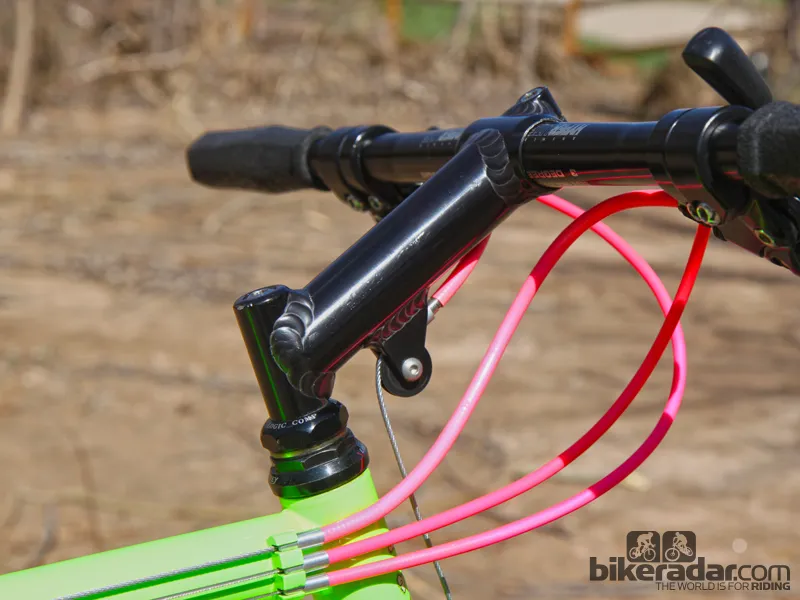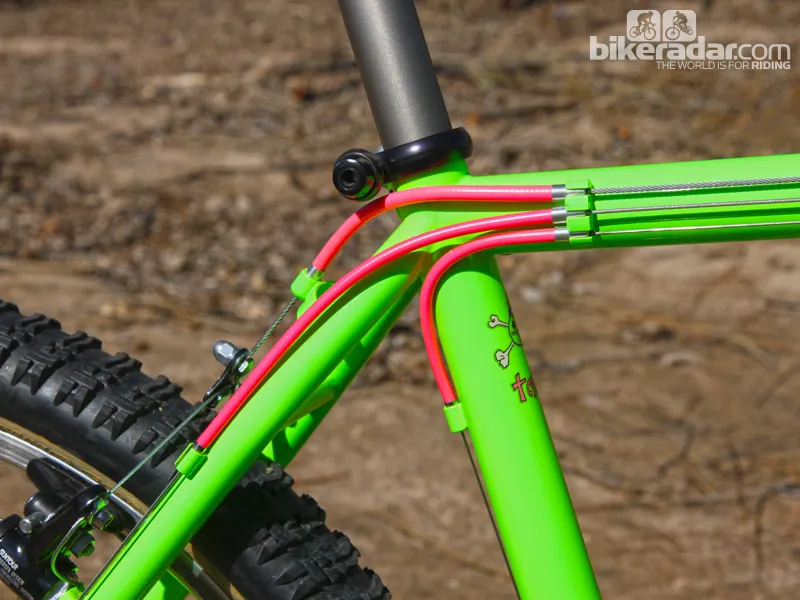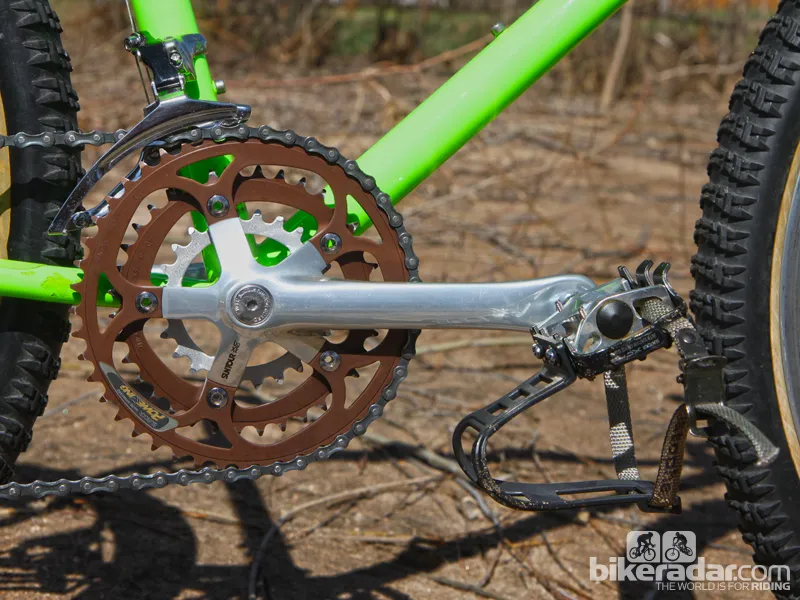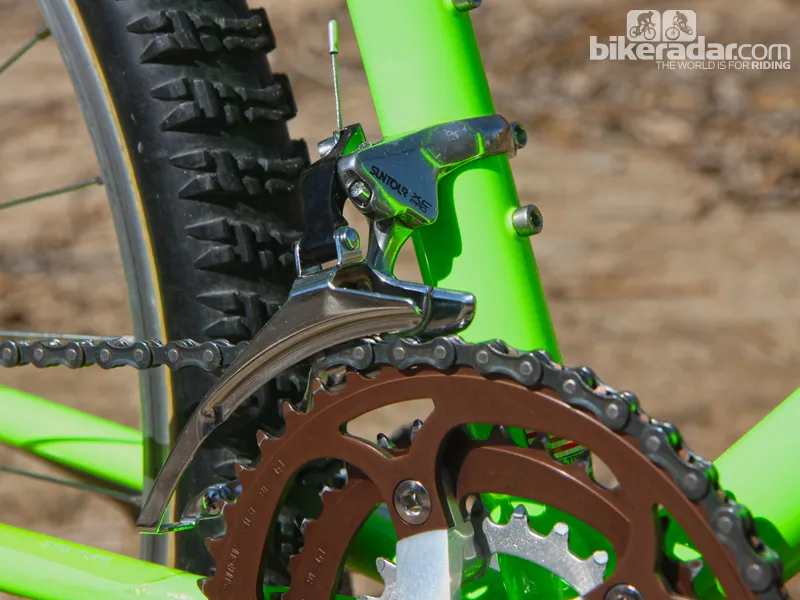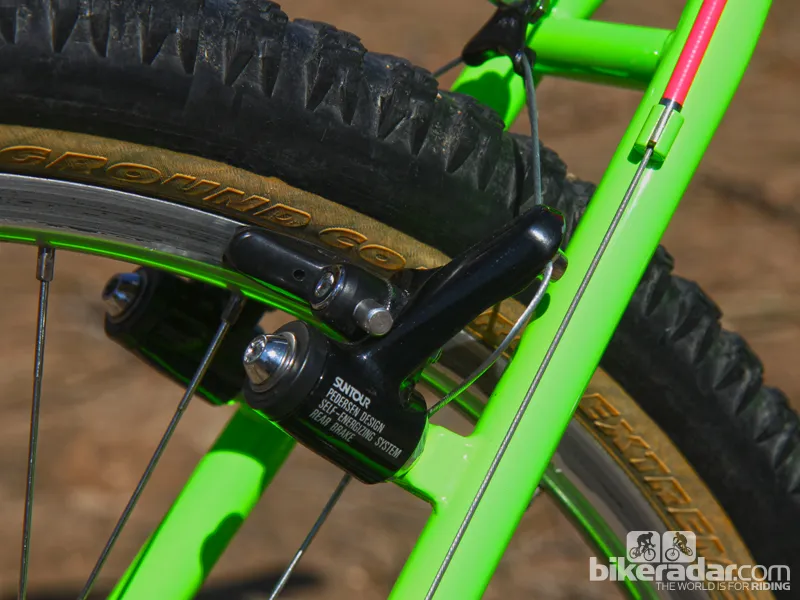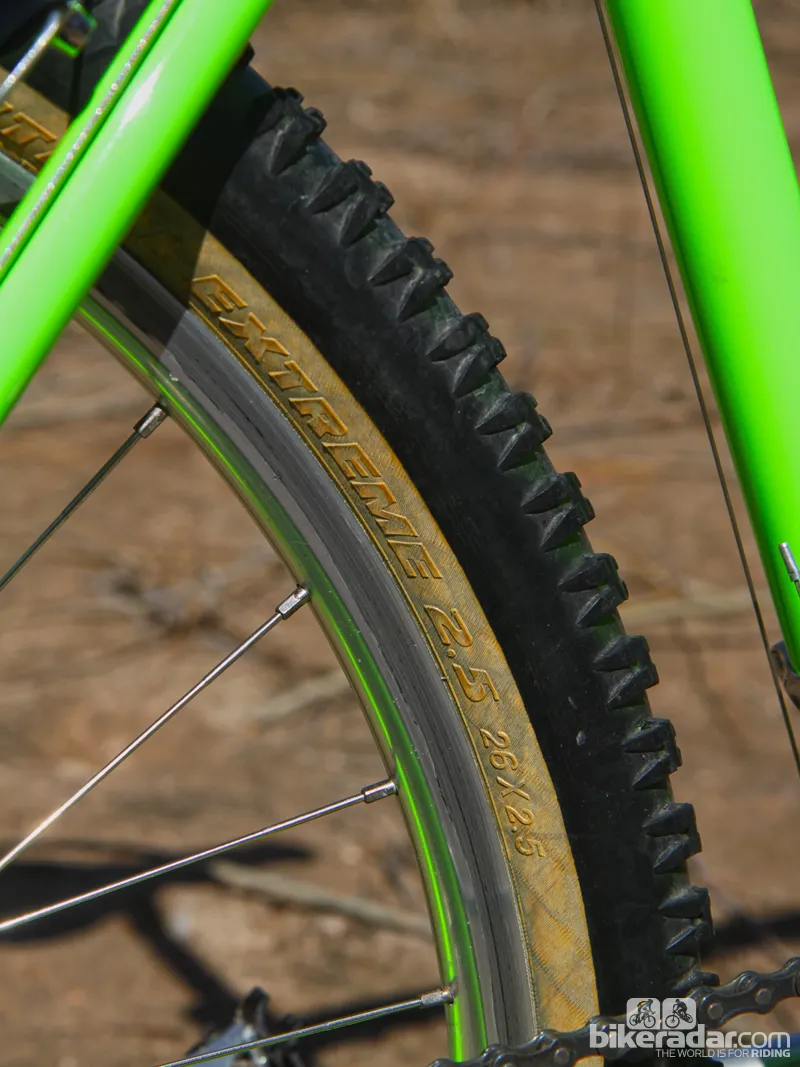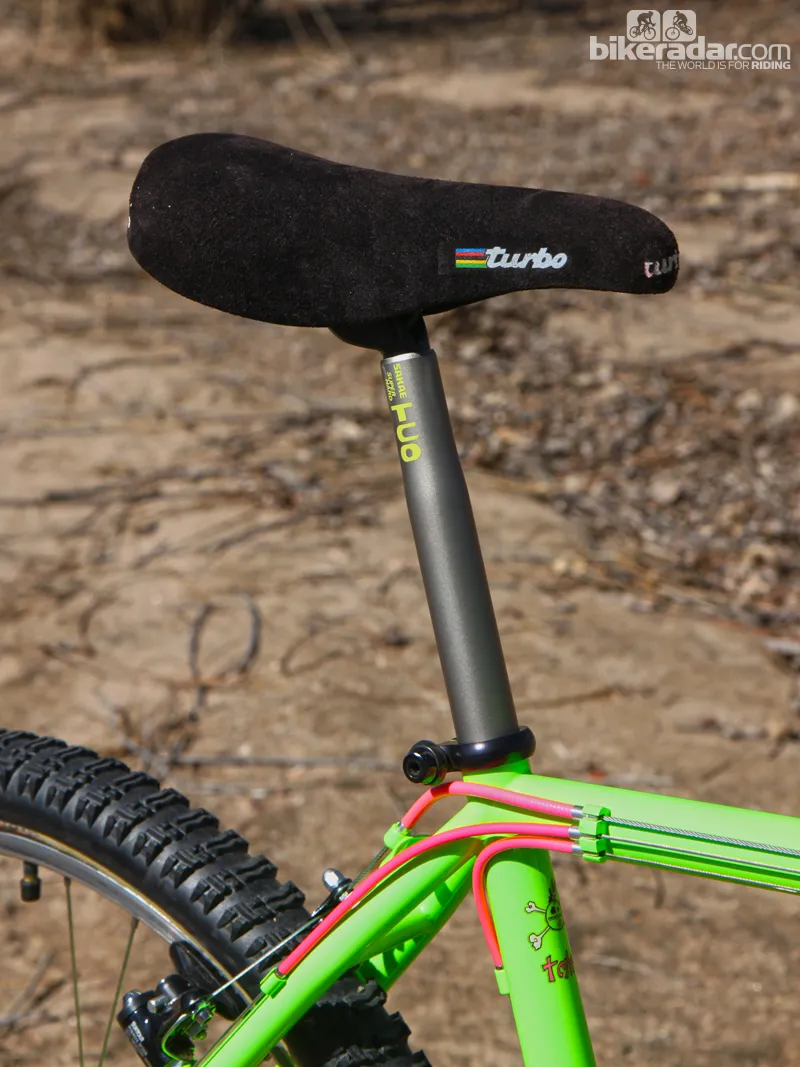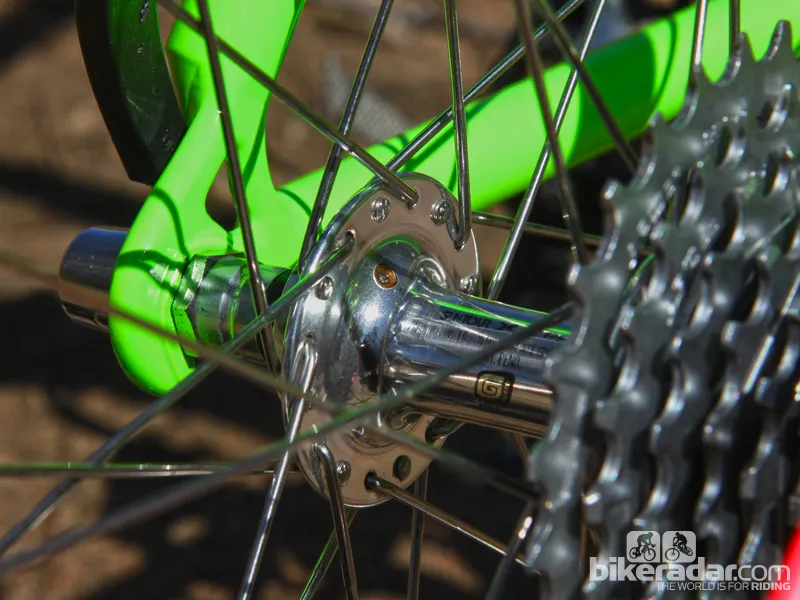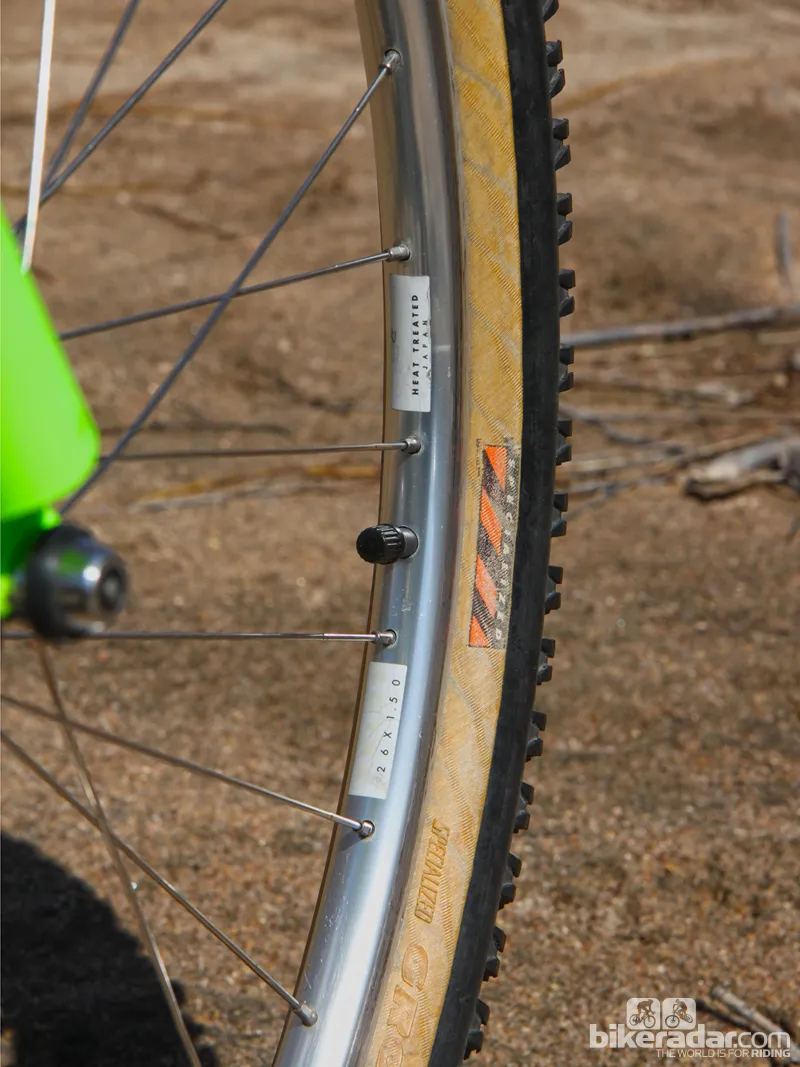To some degree, Chris Chance says that he was simply in the right place at the right time when it came to the founding of his mountain bike company, Fat City Cycles, and the birth of its best known model, the Yo Eddy Team. Luck may indeed have played some part of that magical formula, but there was little in the way of happenstance when it came to the design of that particular bike, why it was so successful at the time, and why it continues to stand today as an icon of the heyday of mountain biking.
Click through the gallery at right for a detailed look at this Fat City Cycles Yo Eddy Team.
Chance started out his framebuilding career on the road but eventually moved over to the mountain bikes as the sport really started to grow. In fact, even the name of the company was a reference to how new mountain biking really was. At the time, mountain bikes were also sometimes called "fat bikes" – quite different than what that means today.
"The 'Fat Chance' was just too good a name to pass up for a bike, and 'Fat City' just felt like where we were headed," Chance told BikeRadar while on vacation in Hawaii. "We were just so about doing a great job and building these great bikes that it was like, how could we arrive at anything other than 'Fat City', which was a term for hitting the big time and everything going well for you. It was about the celebration of it all."
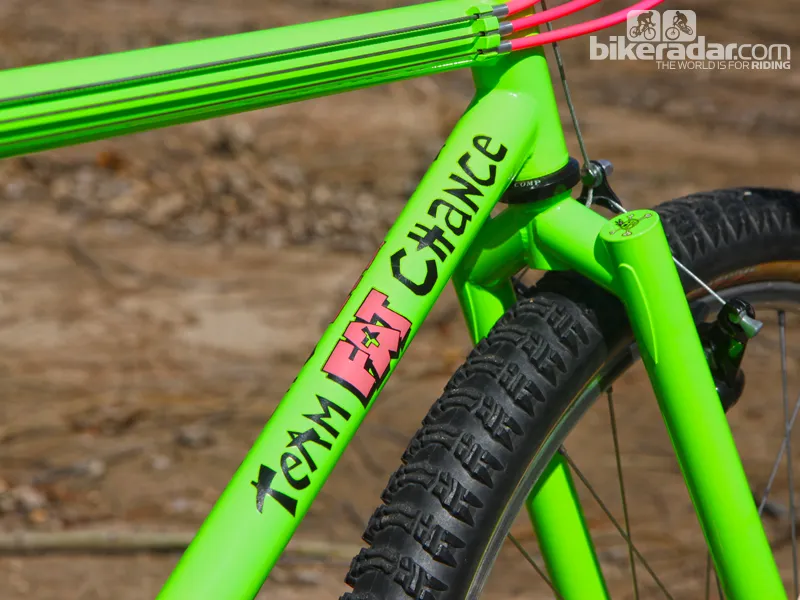
While the Fat Chance put Fat City Cycles on the map, it was the Yo Eddy Team that arguably earned it legendary status. The company's existing bike at the time – the Wicked Fat Chance – put more of an emphasis on comfort. The Yo Eddy Team, on the other hand, prioritized chassis rigidity and handling precision with a bigger down tube and larger-diameter, non-tapering stays that were finished off with those trademark conical ends.
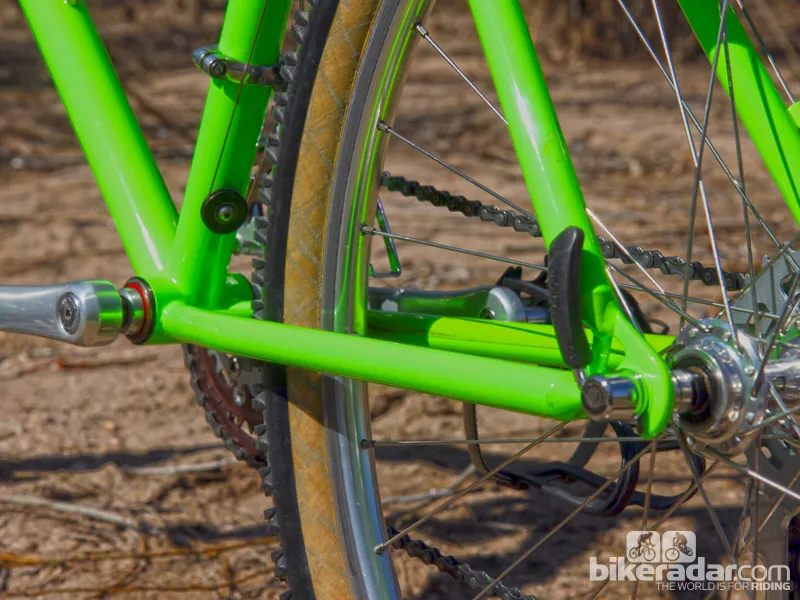
Completing the ensemble was the Yo Eddy Team fork with its similarly non-tapering, straight blades and distinctive TIG-welded, segmented crown – a design that is still often copied to this day. According to Chance, this gave the bike more of a 'connected' feel with its rider, especially when the bike was ridden hard.
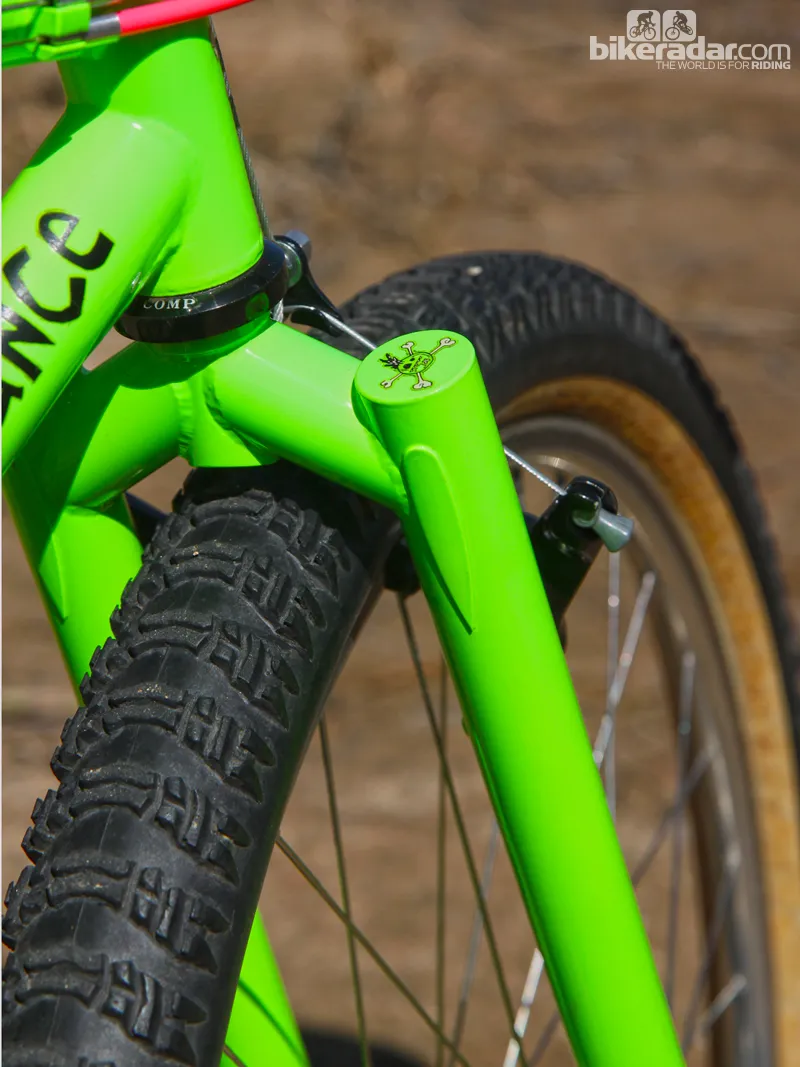
"Telepathic handling is how we described it," Chance said. "You have the thought that you want the bike to go somewhere and it just happens. That bike was just really precise in its handling, especially with that fork. The non-tapering chain stays gave a feel that I really liked. The idea is that when you're banging around on a trail, your wheel can torque on the frame and those non-tapering stays just have a little more control."
Technical traits aside, there was still some intangible trait to the Yo Eddy Team that seemed to draw people in.
"There was something about the Yo Eddy that somehow spoke to where the market was going and what people were looking for," said Chance. "One of the things as a designer that really turned me on about mountain bikes was that I wanted it to do everything really well, which of course is kind of impossible but I really wanted to define and design and build a bike that had a feeling that it never held you back. I held this standard that was really unachievable but doing my best to dial it in. So I think the inspiration that I brought to it somehow came across to people."

"As a rider myself, it related to that high you got when you're a child on a bike and you're like, 'wow' – the world is wide open and you're just taking it all in," he continued. "I wanted that feel of being on the planet to be instilled in the bikes that we built. I think somehow that people got that."
Even more than two decades on, devoted followers still seem to 'get it'.

"It blows my mind. It's like it's still alive! There's still an owner's group, there are still people that write to me and ask about it, like 'hey, when are you going to get back into the business?' It's been amazing to me."
Sadly, Fat City Cycles wasn't quite able to survive growing to the next step and a number of factors conspired against the company. Fueled by healthy sales figures, the company grew out of its original facility in Somerville, Massachusetts. In an effort to consolidate costs and boost its engineering resources, Chance decided to sell the company to an outside investor, who also owned Serotta Competition Bicycles and – of course – promised to give Fat City Cycles everything it needed to succeed.
The resultant move to upstate New York didn't go over well with the all-star cast of employees – many of whom left and eventually started up their own successful bike companies like Independent Fabrications – and Ben Serotta ultimately ended up buying his company back, which left Fat City in an awkward financial position. Overhead costs on the new facility ended up being shockingly high, the mountain bike boom started to fizzle, and all of the stress started to pile up. By the time 1999 rolled around, Chance was burned out and the company folded.
"I needed to find out there was something else in life besides bikes. It's like a love affair; when you're done, you need to separate for a while."
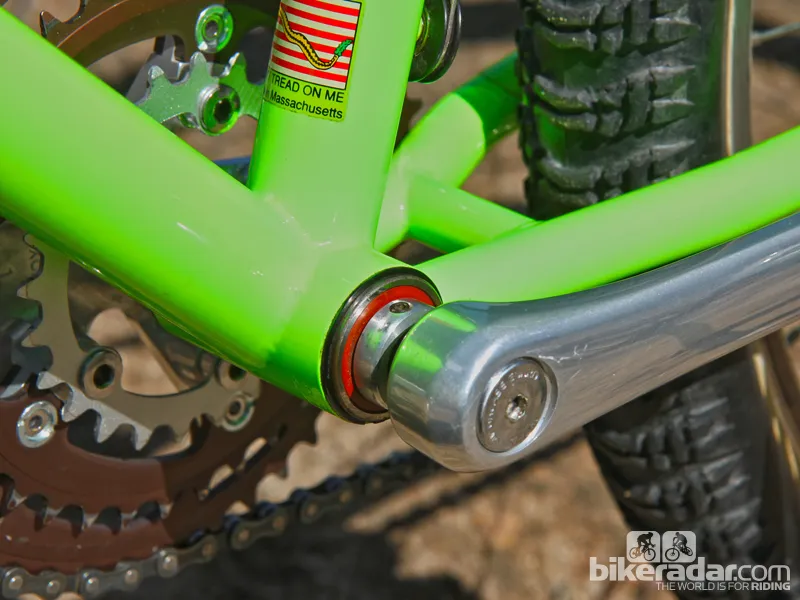
However, that doesn't mean Fat City Cycles is dead forever. Chance has never lost his love for mountain biking and trips to recent North American Handmade Bicycle Shows have apparently rekindled something inside of him.
"I was thrilled to go there when it was in Sacramento a few years ago," he said. "It was so vibrant, and so alive, and so great for me to reconnect with people I hadn't seen in like fifteen years. I got such a warm welcome back. It was just a thrill for me."
Chance says that a return to the bicycle industry is mostly just something in the back of his mind right now. Even so, he admits that he's thinking about it more regularly these days.
"I still get tugged on to get back into the bike business. It could happen."
Special thanks go to the folks at Vintage MTB Workshop. For more incredible samples of mountain bike history – and a preview of what you'll see here in coming months – visit their web site at www.vintagemtbworkshop.com.
Complete bike specifications
- Frame: 1990 Fat City Cycles Yo Eddy Team, 18in
- Fork: Fat City Cycles Yo Eddy Team
- Headset: Ritchey Logic Comp
- Stem: American Roller
- Handlebars: Answer Hyperlite
- Tape/grips: Grab-On MTN-2
- Front brake: Suntour XC
- Rear brake: Suntour XC Pedersen SE
- Brake levers: Suntour XC Pro
- Front derailleur: Suntour XC Pro
- Rear derailleur: Suntour XC Pro
- Shift levers: Suntour XC Pro
- Cassette: Suntour Accushift Plus II 7-speed, 12-28T
- Chain: Suntour Accushift Plus
- Crankset: Suntour XC Pro, 175mm, 26/36/46T
- Bottom bracket: Cartridge bearing, press-fit
- Pedals: Suntour XC Pro Grease Guard
- Rims: Specialized TXL21
- Hubs: Suntour XC Pro Grease Guard
- Spokes: Wheelsmith 14/15 double butted
- Front tire: Specialized Ground Control Extreme, 26 x 2.5in
- Rear tire: Specialized Ground Control Extreme, 26 x 2.5in
- Saddle: Selle Italia Turbo
- Seatpost: SR Sakae TCO, 29.4mm
